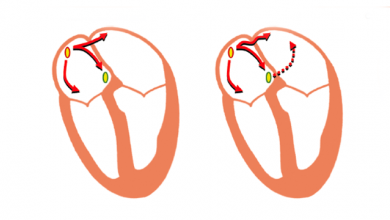Search results
Author(s):
Roberto Keegan
,
Cynthia Yeung
,
Adrian Baranchuk
Added:
3 years ago
Chagas disease is an important public health problem in Latin America. Almost 25% of the population (approximately 65 million individuals) are at risk of infection and another 6 million people are affected.1 However, migration and globalisation have resulted in the increased presence of Chagas disease worldwide, particularly in the US and Europe.
Chagas disease is caused by a parasite, the…
View more
Author(s):
Seigo Yamashita
,
Ashok J Shah
,
Saagar Mahida
,
et al
Added:
3 years ago
Catheter ablation therapy has been widely used for rhythm control in patients with atrial fibrillation(AF).1 Since the first report in 1994,2 several interventional techniques have been proposed for AF, including replication of the surgical Maze,2 targeting pulmonary vein (PV) foci,3 segmental ostial and circumferential PV isolation,4,5 ganglionated plexi ablation,6 linear lesions in the left…
View more
Author(s):
Fouad Khalil
,
Konstantinos C Siontis
,
Gabor Bagameri
,
et al
Added:
3 years ago
Catheter-based ablation has been a well-established tool in the treatment of ventricular tachycardia (VT). However, the effectiveness of catheter ablation may be limited by its ability to access sites of arrhythmogenic tissue and achieve adequate lesion size in target areas without risking collateral damage. Antiarrhythmic surgery would be an effective alternative in such situations. Despite the…
View more
Author(s):
George D Katritsis
,
Vishal Luther
,
Prapa Kanagaratnam
,
et al
Added:
3 years ago
The introduction of cardiac electroanatomic mapping systems in the mid-1990s has permitted investigators to record intracardiac electrograms (EGMs) with accurate spatial localisation in 3D.1 These 3D mapping systems have enabled the display of the cardiac chambers as an anatomical shell upon which voltage, or activation, information can be displayed. Most commonly, colour is used to represent the…
View more
Value of Sinus Rhythm Mapping
Author(s):
Mathijs S van Schie
,
Natasja MS de Groot
Added:
1 year ago
Article
Author(s):
George D Katritsis
,
Demosthenes G Katritsis
Added:
3 years ago
Implantable cardiac devices, such as pacemakers, are used to treat a number of heart conditions, especially those related to the electrical conduction system. Cardiac pacemakers are a well-established and effective therapy, and have been in use for more than 50 years.
The first pacemaker was implanted in a patient in October 1958 by Åke Senning in Stockholm, in cooperation with engineer Rune…
View more
Drivers of Atrial Fibrillation
Author(s):
Ian Mann
,
Belinda Sandler
,
Nick WF Linton
,
et al
Added:
3 years ago
Article
Author(s):
Sanjiv M Narayan
,
Hugh Calkins
,
Andrew Grace
,
et al
Added:
3 years ago
Author(s):
Simon Ermakov
,
Melvin Scheinman
Added:
3 years ago
Arrhythmogenic right ventricular cardiomyopathy (ARVC) is an inherited cardiomyopathy characterised by progressive replacement of the ventricular myocardium by fibrofatty tissue.1 Patients with the disease are predisposed to ventricular arrhythmias, heart failure and sudden cardiac death.
Pathophysiology
ARVC has a strong genetic basis with most disease variants displaying an autosomal dominant…
View more
Author(s):
Sebastiaan RD Piers
,
Katja Zeppenfeld
Added:
3 years ago
Over the last 20 years ventricular tachycardia (VT) ablation has evolved from a treatment modality for selected patients withrecurrent haemodynamically tolerated VT (which can be mapped during ongoing arrhythmia), to a therapeutic option for patients with tolerated and untolerated VT using substrate-based ablation strategies.1 The substrate for VT after myocardial infarction (MI) consists of…
View more













 « First
« First